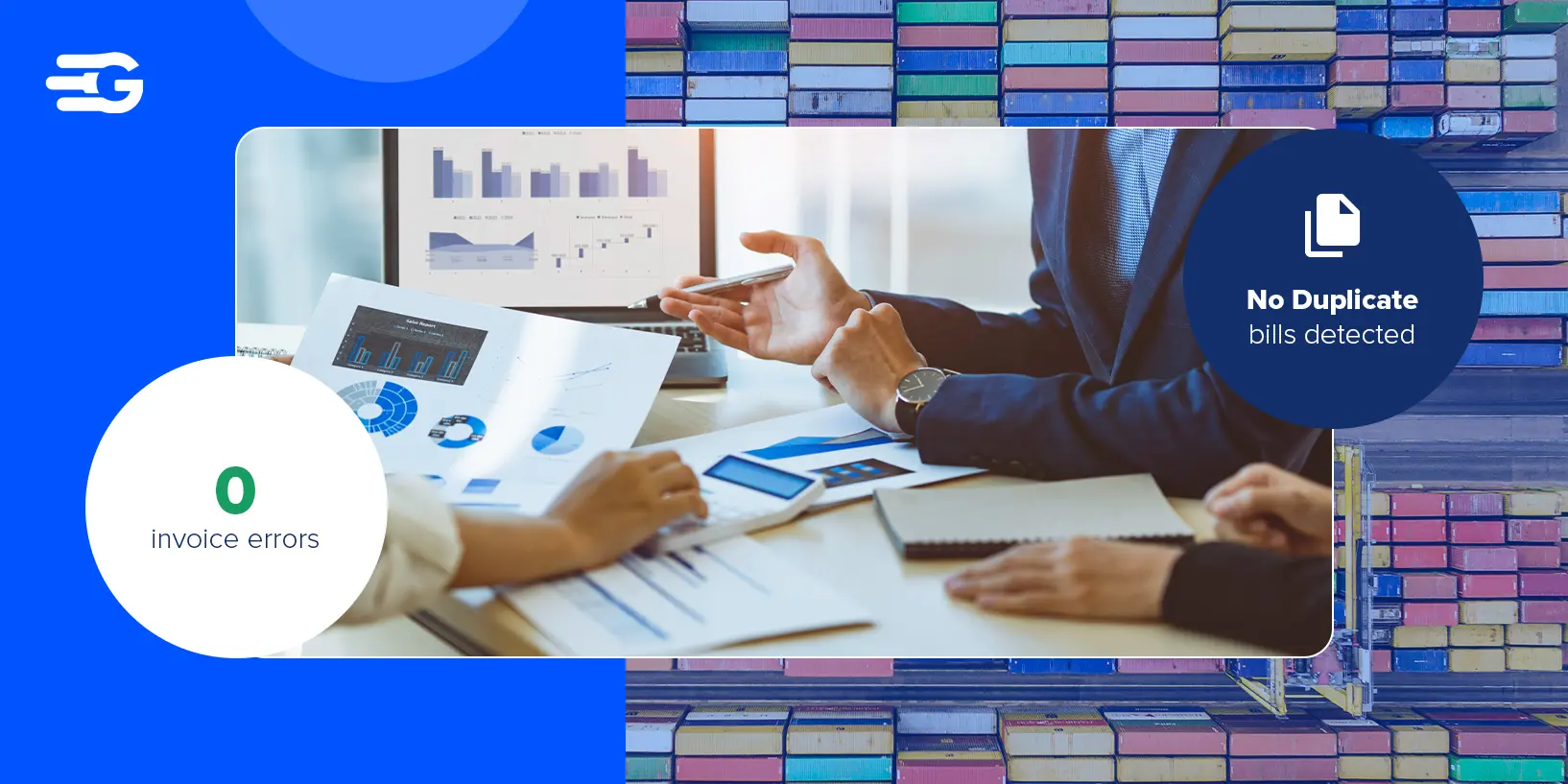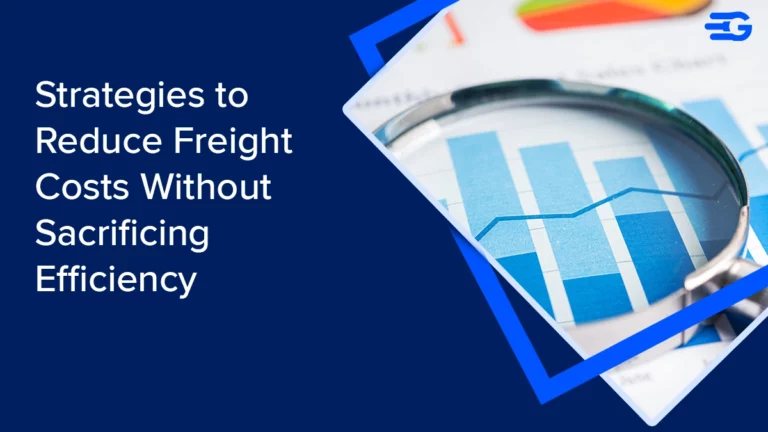Freight Audit: Key Elements, Challenges, and Best Practices
Table of Contents
Understanding Freight Audit
It is the process of verifying, analyzing, and validating freight invoices to ensure accuracy and eliminate overcharges. It involves cross-checking shipping records, contracts, and carrier agreements to confirm that every charge aligns with the agreed terms.
Freight invoices often contain errors, misapplied surcharges, incorrect rates, duplicate charges, or weight discrepancies. A thorough invoice audit helps businesses catch these mistakes before they impact the bottom line. It also provides insights into shipping trends, carrier performance, and cost-saving opportunities.
Without audits, companies risk paying more than they should, losing track of hidden fees, and struggling with cash flow issues due to billing inaccuracies. Whether done manually or with automation, freight bill audits are essential for maintaining financial control and ensuring logistics operations run smoothly.
Why Freight Bill Audits Matter for Cost Optimization
Freight invoices are often riddled with errors, misapplied rates, duplicate charges, incorrect weight classifications, and unexpected accessorial fees. Without a structured audit process, businesses end up paying more than they should, impacting profitability and cash flow.
A freight audit isn’t just about catching billing mistakes. It’s about gaining control over freight spending. By regularly auditing invoices, companies can:
- Identify and recover overcharges: Even small discrepancies add up over time. Audits help pinpoint errors and secure refunds.
- Improve budget accuracy: Unchecked freight costs lead to unpredictable expenses. Auditing ensures shipping expenses align with forecasts.
- Strengthen carrier relationships: Clear, error-free billing fosters trust and prevents disputes, making negotiations smoother.
- Gain insights into shipping trends: A well-audited freight process highlights patterns in costs, carrier performance, and inefficiencies, helping businesses refine their logistics strategy.
For companies shipping high volumes, even a 1-2% reduction in freight costs through audits can translate to significant annual savings. An automated freight audit solution streamlines this process, eliminating manual work while providing real-time cost visibility.
Step-by-Step Process of a Freight Audit
Pre-Audit Preparation & Data Gathering
A freight audit starts with organizing and consolidating all shipping-related data. This includes:
- Bills of lading (BOL): Confirms shipment details like weight, dimensions, and destination.
- Freight invoices: Lists charges from carriers, including base rates and surcharges.
- Carrier contracts & rate agreements: Defines the pricing structure, negotiated discounts, and applicable terms.
- Shipment tracking records: Provides real-time visibility into delivery status and transit details.
Without this data, auditors can’t accurately verify charges or detect inconsistencies. Ensuring accurate, complete, and easily accessible records is the foundation of a successful freight audit.
Invoice Verification & Validation
Every invoice undergoes a detailed cross-check against shipment records, carrier agreements, and rate schedules. The goal is to confirm that charges are accurate and justifiable. Auditors look for:
- Incorrect freight classification: Misclassified shipments lead to inflated costs.
- Weight and dimensional discrepancies: Carriers may charge based on incorrect weight calculations.
- Duplicate billing: Some shipments might be mistakenly invoiced twice.
- Unapplied discounts: Volume-based or contractual discounts may be missing.
- Hidden fees and unexpected surcharges: Fuel surcharges, detention fees, or accessorial charges need validation.
Identifying and Resolving Discrepancies
When errors are detected, businesses must quickly dispute incorrect charges with carriers. This involves:
- Documenting the discrepancies: Compiling shipment data, rate agreements, and invoice details as proof.
- Communicating with carriers: Sending a structured claim with evidence of incorrect charges.
- Negotiating refunds or credits: Ensuring adjustments are processed in a timely manner.
- Updating internal records: Tracking dispute resolutions to prevent recurring issues.
A well-structured dispute resolution system prevents financial losses and strengthens accountability with carriers.
Also Read: A Complete Guide to Choosing the Best Freight Audit Provider
Automation Tools for Freight Auditing
Manual audits are slow, error-prone, and labor-intensive. AI-powered freight audit tools, like our automated audit solutions, simplify the process by:
- Automatically detecting anomalies: Instantly flags overcharges, duplicate invoices, or incorrect rates.
- Comparing invoices with historical data: Identifies trends and irregularities in freight costs.
- Providing real-time cost visibility: Centralizes audit data in an easy-to-access dashboard.
- Streamlining dispute resolution: Automates communication with carriers for faster claims processing.
By leveraging automation, businesses can reduce audit time, minimize human errors, and unlock significant cost savings.
Key Challenges in the Freight Auditing Process & How to Overcome Them
Complex Invoices and Rate Fluctuations
Freight invoices are rarely straightforward. They often include multiple line items, fluctuating surcharges, and varying tariff rates that make it difficult to verify accuracy. Carriers may apply fuel surcharges, peak season fees, detention charges, and other accessorial costs, which can change frequently based on market conditions. Without a structured audit process, businesses risk overlooking errors and paying more than they should.
Solution: Implementing an AI-powered freight audit platform helps businesses keep up with these fluctuations. Automated tools compare invoices against real-time rate databases, contract terms, and historical data to flag inconsistencies instantly. By eliminating manual verification, companies can prevent overcharges while ensuring their freight costs align with actual market conditions.
Data Integration and Visibility Issues
Many businesses struggle with scattered shipment and invoice data spread across different carriers, freight forwarders, and internal systems. This fragmentation makes it difficult to track costs, identify trends, and perform a comprehensive audit. Without centralized data, errors go unnoticed, and resolving disputes with carriers becomes time-consuming.
Solution: A transportation management system (TMS), like GoComet, integrates data from multiple sources into a single platform. This provides real-time visibility into invoices, shipment records, and audit reports, allowing businesses to quickly detect discrepancies and analyze cost trends. A centralized system also simplifies compliance checks, making audits more efficient and reliable.
By addressing these challenges with the right freight auditing technology, businesses can streamline their freight auditing process, reduce costs, and gain better control over their logistics expenses.
Manual vs. Automated Freight Auditing
Freight auditing ensures businesses are charged accurately for their shipments. It involves verifying invoices, checking carrier rates, and identifying discrepancies. Companies can handle this process manually or automate it using AI-powered tools.
Manual Freight Auditing
Manual auditing relies on human review to cross-check invoices, shipment records, and carrier contracts. Finance or logistics teams verify surcharges, rates, and potential errors by manually comparing data.
Pros: Full control over audits, no software costs, allows for custom checks.
Cons: Time-consuming, prone to human error, difficult to scale, lacks real-time insights.
While manual auditing may work for companies with fewer shipments or highly customized freight structures, it can quickly become inefficient as volumes grow.
Automated Freight Auditing
Automated auditing uses AI and machine learning to verify invoices in real time. These systems compare charges with historical data, contracts, and market rates, flagging discrepancies instantly.
Pros: High accuracy, faster processing, cost savings, real-time visibility, scalable for growing businesses.
Cons: Initial setup costs, requires integration with existing systems.
For companies handling large shipment volumes, automation reduces errors, speeds up invoice processing, and provides instant insights into freight costs.
Global Pharma Company Cuts Invoice Errors and Speeds Up Payments
A global pharmaceutical company with operations in 80+ countries struggled with manual freight invoice verification, leading to errors, overpayments, and slow approvals. With hundreds of shipments each month, verifying invoices manually was time-consuming and inefficient.
By using GoInvoice’s automated invoice reconciliation, the company:
- Eliminated invoice errors, cutting processing time by 65%
- Reduced manual effort, reallocating 75% of its team to critical tasks
- Sped up approvals and payments with automated checks
- Simplified audits with a centralized invoice repository
With automation in place, the company improved accuracy, efficiency, and compliance in its freight invoice process and freight management.
Best Practices for Effective Freight Auditing
Regular Audits & Continuous Monitoring
Freight audits should not be a one-time process. Businesses should implement regular audits to track cost trends, detect anomalies, and optimize carrier contracts.
Leveraging AI-Powered Freight Auditing Solutions
AI-driven audit tools provide real-time invoice validation, automated dispute resolution, and predictive analytics for smarter decision-making.
Ensuring Compliance & Accuracy
Freight audits also help companies stay compliant with industry regulations and avoid penalties. Keeping detailed records ensures transparency and accountability.
Conclusion
Freight auditing is a critical cost-saving strategy for businesses handling large shipping volumes. By leveraging automation and AI-powered solutions, companies can streamline audits, recover overcharges, and gain better control over their logistics expenses.
Want to simplify your freight audit process? See how GoComet’s AI-powered freight audit tool can help your business save time and money.
FAQs
What is the biggest mistake companies make in freight auditing?
One of the most common mistakes is relying on manual invoice verification. This leads to errors, overpayments, and inefficiencies. Without automation, companies struggle with duplicate invoices, missed discrepancies, and slow approvals, increasing costs and delaying payments.






